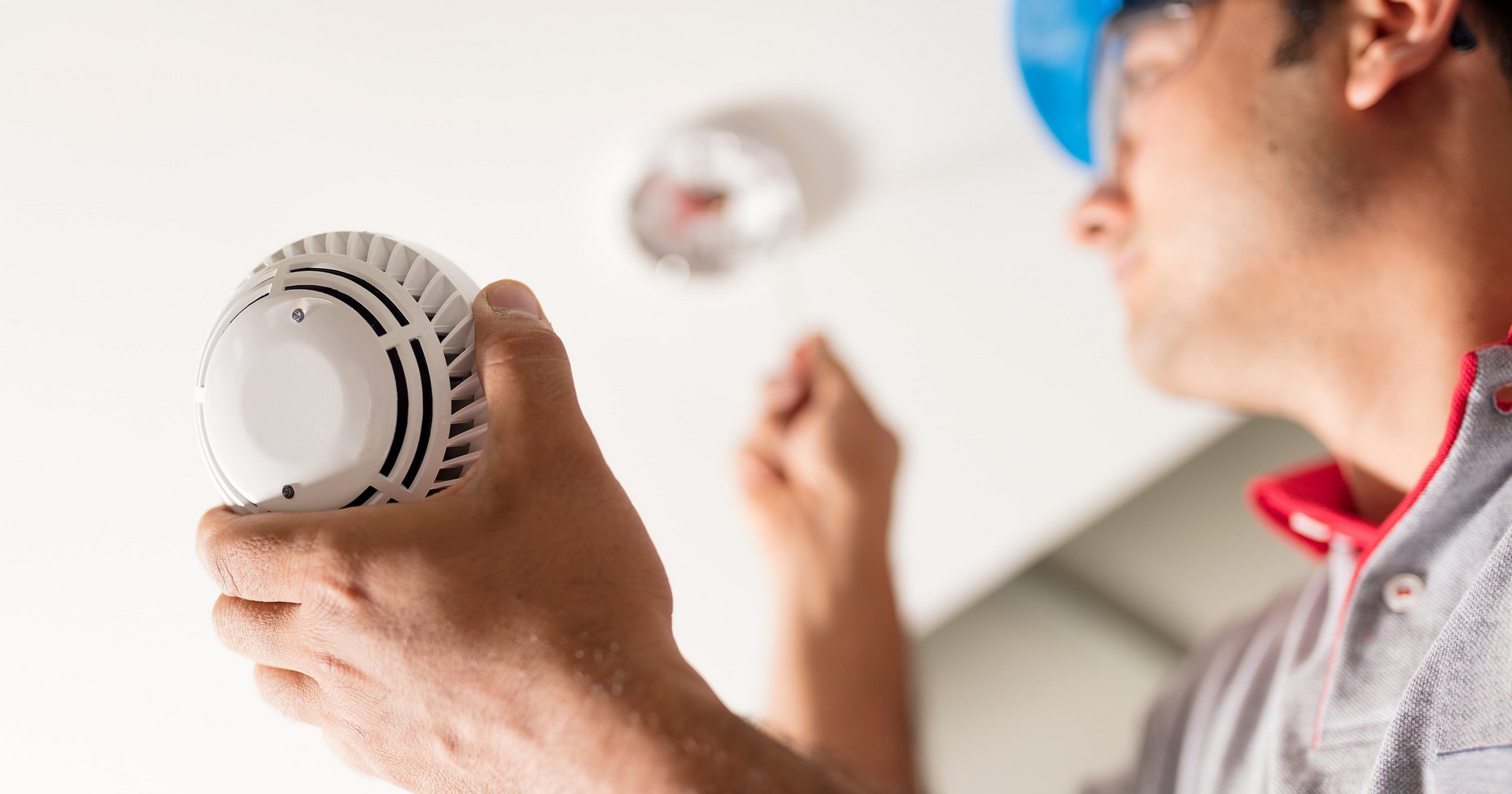How Does a Smoke Detector Work?

A smoke detector is one of the most essential fire safety devices in any building. But how does a smoke detector work? Understanding the science behind these devices can help you make informed decisions about placement, maintenance, and upgrades for maximum protection.
Smoke detectors work by sensing particles in the air that indicate the presence of smoke. Depending on the type of detector, this happens through either ionization or photoelectric technology.
Guardian Fire Protection has been helping businesses in Maryland, Northern Virginia, and Washington, DC, stay safe from fire hazards for over 40 years. Below, Guardian Fire Protection explains the importance of smoke detectors.
What Happens When Smoke Is Detected?
Here’s what happens when smoke triggers an alarm:
- The smoke enters the detection chamber of the device.
- In an ionization detector, smoke disrupts a small electrical current, triggering the alarm. In a photoelectric detector, smoke scatters a light beam inside the chamber, setting off the alarm.
- A loud siren sounds to alert occupants of danger.
- Some modern smoke detectors send alerts to connected smart devices or monitoring systems.
- Hardwired detectors connected to fire alarm systems in commercial buildings can alert emergency services.
Powering a Smoke Detector
Smoke detectors are powered by batteries or a building’s electrical system. Battery-operated models are easy to install and remain functional during power outages, though they require regular testing and battery replacements at least once a year. Hardwired smoke detectors are directly connected to a building’s electrical system and often include a backup battery for added reliability. Due to their dependable performance, these are becoming more prevalent and required in more jurisdictions.
Smart smoke detectors offer an advanced option, sending alerts to a user’s phone for remote monitoring and integration with other fire safety systems. While battery-powered and hardwired detectors provide strong protection, hardwired systems are typically recommended for commercial properties.
Placement & Sensitivity Adjustments
Proper placement of smoke detectors is key to fast and effective fire detection. Every conference area, office, and each level of business should have a smoke detector installed. Detectors should be placed at least 10 feet away from cooking appliances to prevent false alarms. Since smoke rises, mounting them high on walls or ceilings allows for quicker detection.
Avoid positioning detectors near vents, windows, or doors, as airflow can disrupt their ability to sense smoke. Some models offer sensitivity adjustments, which help reduce false alarms while still detecting real threats. This feature is particularly useful in kitchens, near fireplaces, or areas with high humidity where occasional smoke or steam could trigger unnecessary alerts.
Maintaining a Smoke Detector for Reliable Performance
Regular maintenance keeps smoke detectors functioning correctly and prevents nuisance alarms or failures. It’s vital to partner with a fire protection company, like Guardian Fire Protection, for semiannual inspections and testing. Routine maintenance helps keep your business protected from unexpected fire hazards.
Schedule Service With Guardian Fire Protection
A reliable smoke detection system is essential for protecting lives and property. Whether you need new installations, inspections, or maintenance, Guardian Fire Protection is here to help. Our team provides expert fire protection services across Maryland, Northern Virginia, and Washington, DC.
Call Guardian Fire Protection today to learn about our fire protection services or request an appointment online.
Category: Fire Alarms